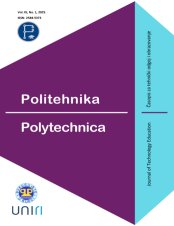Abstract
Proposed work aims to determinate cognitive and metacognitive aspects of motivational processes which represent the basis of technology acceptance and usage by the people of different age groups. Research focus is on the interrelation between participants’ age and cognitive abilities, their cognitive motivation (need for cognition) and metamemory (assessment of their own memory) as well as their results in usage, perceived ease of use and perceived usefulness of technology. Correlation analysis of proposed variables, determination of main predictors for technology acceptance makes strong foundation for setting up research problems. Understanding main predictors of technology acceptance is emphasized as important research field. Proposed methodology should empirically determine predictors which affect decision on using technology. Results show significant correlations among proposed variables and a new modification of the original Technology Acceptance Model (TAM) is proposed incorporating significant predictors of motivational variables. At the end scientific and practical contributions are presented as well as limitations of present study and possible future research.References
Arning, K., Ziefle, M. (2007). Understanding age differences in PDA acceptance and performance. Computers in Human Behavior, 23, 2904-2927.
Bujas, Z. (2005). B-serija. Priručnik za primjenu testa i ocjenjivanje rezultata. Zagreb: Hrvatski zavod za zapošljavanje.
Bujas, Z., Petz, B. (2005). M-serija. Priručnik za primjenu testa i ocjenjivanje rezultata. Zagreb: Hrvatski zavod za zapošljavanje.
Cacioppo, J. T., Petty, R. E. (1984). The Efficient Assessment of Need for Cognition. Journal of Personality Assessment, 48(3), 306-307.
Cacioppo, J. T., Petty, R. E., Fenigstein, J. A., Jarvis,W. B. G. (1996). Dispositional Differences in Cognitive Motivation: The Life and Times of Individuals Varying in Need for Cognition. Psychological Bulletin, 119(2), 197-253.
Czaja, S. J., Lee, C. C. (2007). The impact of aging on access to technology. Universal Access in the Information Society, 5, 341-349.
Davis, F. D. (1986). A technology acceptance model for empirically testing new end-user information systems: Theory and results. Doctoral dissertation. Cambridge, MA. MIT Sloan School of Management.
Davis, F. D. (1989). Perceived usefulness, perceived ease of use, and user acceptance of information technology. MIS Quarterly, 13(3), 319-339.
Kaufman, A. S., Horn, J. L. (1996). Age changes on tests of fluid and crystallized ability for women and men on the Kaufman Adolescent and Adult Intelligence test (KAIT) at ages 17-94 years. Archives of Clinical Neuropsychology, 11, 97-121.
Lee, Y., Kozar, K. A., Larsen, K. R. T. (2003). The Technology Acceptance Model: Past, Present, and Future. Communications of the Association for Information Systems, 12(50), 752-780.
Lee, S., Kim, B. (2009). Factors affecting the usage of intranet: A confirmatory study. Computers in Human Behavior, 25(1), 191-201.
Marangunić, N., Granić, A. (2012). TAM - četvrt stoljeća istraživanja. Suvremena psihologija, 15(2), 205-224.
Marangunić, N., Granić, A. (2015). Technology acceptance model: a literature review from 1986 to 2013. Universal Access in the Information Society, 14, 81-95.
Padilla-Meléndez, A., Aguila-Obra, A., Garrido-Moreno, A. (2013). Perceived playfulness, gender differences and technology acceptance model in a blended learning scenario. Computers & Education, 63, 306-317.
Smith, P., Whetton, C. (1999). Testovi općih sposobnosti - TOS. Psihološki mjerni instrumenti, Naklada Slap, Jastrebarsko.
Sternberg, R. J. (2005). Kognitivna psihologija. Naklada Slap, Jastrebarsko.
Sučević, Đ., Momirović, A., Fruk, G., Auguštin, B. (2004). Kognitivni neverbalni test - KNT. Psihološki mjerni instrumenti, Naklada Slap, Jastrebarsko.
Tonković, M., Vranić, A. (2011). Self-evaluation of memory systems : Development of the questionnaire. Aging & mental health, 15(7), 830-837.
Venkatesh, V. (2000). Determinants of perceived ease of use: Integrating control, intrinsic motivation, and emotion into the technology acceptance model. Information Systems Research, 11(4), 342-365.
Venkatesh, V., Davis, F. D. (1996). A model of antecedents of perceived ease of use: Development and test. Decision Sciences, 27(3), 451-481.
Yang, C-C., Yang, S-Y., Chang, Y-C. (2023). Predicting Older Adults’ Mobile Payment Adoption: An Extended TAM Model. Int. J. Environ. Res. Public Health, 20(2).
Zarevski, P. (2002). Psihologija pamćenja i učenja. Naklada Slap, Jastrebarsko.
Zarevski, P. (2012). Struktura i priroda inteligencije (II. prošireno izdanje). Naklada Slap, Jastrebarsko.

This work is licensed under a Creative Commons Attribution-NonCommercial 4.0 International License.
Copyright (c) 2025 Array

